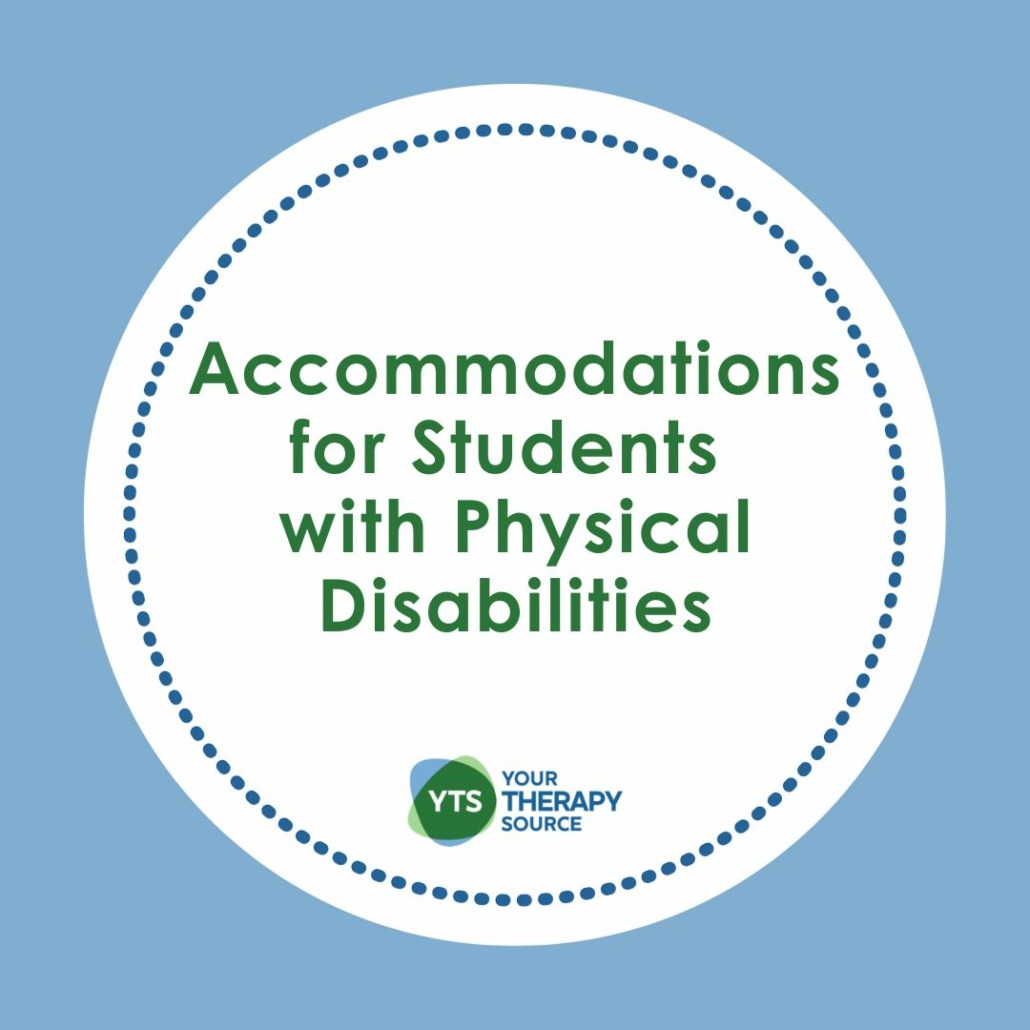Accommodations for Students with Physical Disabilities
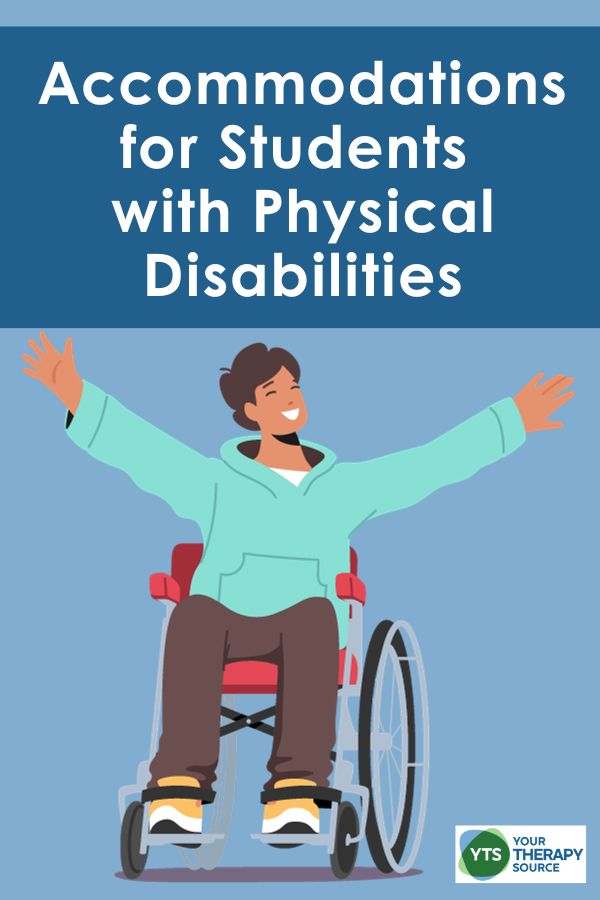
In an inclusive educational environment, understanding and implementing accommodations for students with physical disabilities is of paramount importance. A physical disability can vary like a fracture, cerebral palsy, traumatic brain injury, muscular dystrophy, spinal cord injuries, visual impairments and more. Regardless of the specific needs of a student, the central goal remains the same: to ensure equal access to educational opportunities. One way to support equal access is to provide accommodations for students with physical disabilities.
Understanding Physical Disabilities in the Classroom
Physical disabilities can vary widely in their impact on a student’s ability to participate in classroom activities. For instance, a student with cerebral palsy might have difficulty with body movements, while another with a brain injury might need additional time to process information. Understanding the unique needs of each student is the best way to tailor accommodations effectively.
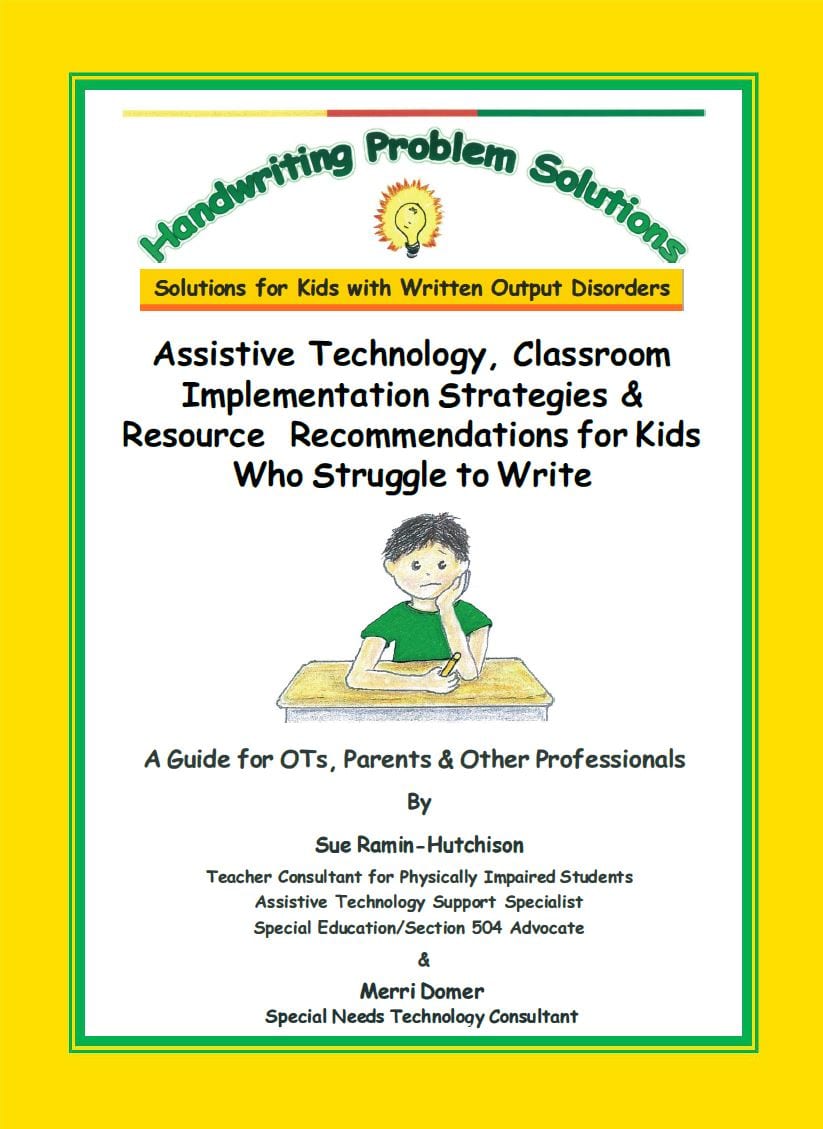
Assistive Technology, Classroom Implementation Strategies & Resource Recommendations for Kids Who Struggle to Write
Legal Protections and Rights
In the United States, the Disabilities Education Act and the Disabilities Act ensure equal opportunity for all students. These acts mandate that public school districts and higher education institutions provide reasonable accommodations, ensuring full participation for qualified students. For more on the difference between accommodations and modifications, this article on Accommodations vs. Modifications provides a clear distinction.
Accommodations for a Range of Disabilities
While we’ve touched on a couple of specific conditions, it’s worth noting that the spectrum of physical disabilities is vast. For instance:
- Visual Impairments: These students might benefit from materials in larger print, digital formats, or assistive technology tailored to their needs.
- Mobility Impairments: The school environment should be free from physical barriers. Accommodations might include ramps, elevators, or modified classroom layouts. For those with severe mobility impairments, services like occupational therapists can be beneficial.
For a deeper dive into specific accommodations, this resource on dysgraphia and another on dyscalculia are immensely helpful.
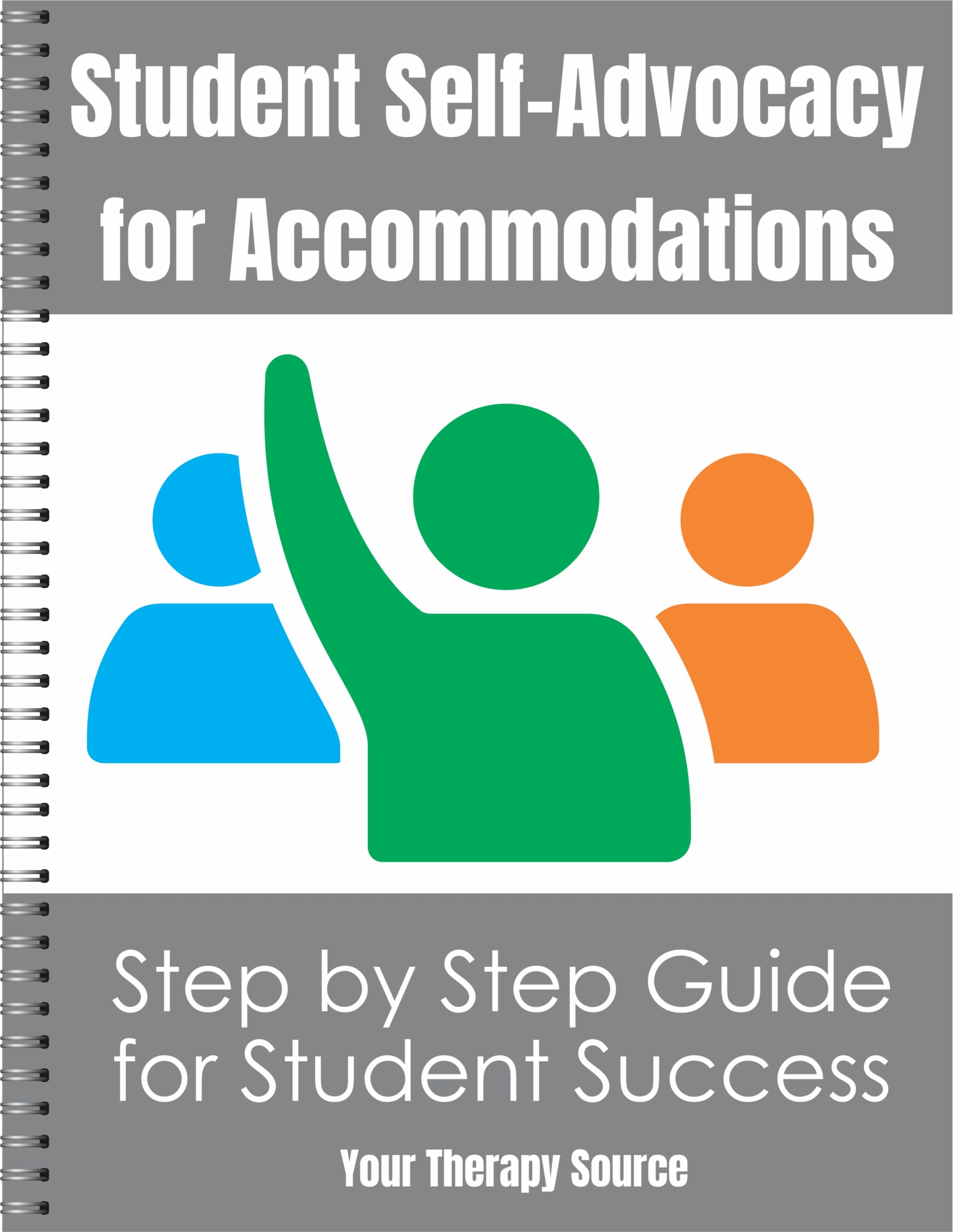
Self-Advocacy for Students
The Role of Special Education Teachers and Therapists
A special education teacher plays a vital role in crafting an educational program tailored to a child’s disability. Together with occupational therapists and physical therapists, they assess a student’s needs and devise strategies that enhance learning and independence. One example for students without physical disabilities is for students with ADHD, where 504 accommodations play a pivotal role.
Tailoring Accommodations for Students with Physical Disabilities in Various School Environments
Every student is unique, and the accommodations they require are just as individualized. It’s crucial to understand that no one-size-fits-all approach works when considering accommodations for students with physical disabilities. Furthermore, continuous monitoring and data collection are vital to evaluate if these accommodations genuinely benefit the student. This ensures that the support provided not only meets their current needs but also evolves with them. Read more about examples of specific accommodations that may be necessary in different school environments.
Many students with physical disabilities may need additional time in various academic contexts due to the challenges they face. This is a fundamental and widely recognized accommodation.
Accommodations for Students with Physical Disabilities with an Emphasis on Time-Based Adjustments
- Extended Time on Tests and Assignments: Recognizing that some students may take longer to complete tasks due to their disabilities, offering additional time is crucial. This doesn’t mean they lack understanding; they just require more time to express it.
- Staggered Breaks: Allowing students to take short breaks during prolonged tasks can be beneficial. These breaks can help them reset and reduce fatigue.
- Longer Response Times in Class: Acknowledging that some students might need more time to formulate and voice their answers during interactive sessions.
- Use of Timers: Providing students with timers can help them pace themselves. They can break tasks into manageable chunks, focusing on one segment at a time.
- Extended Laboratory or Hands-on Activity Periods: In scenarios where physical manipulation (like using math manipulatives) is needed, more time might be essential.
- Flexible Homework Deadlines: Offering students the opportunity to submit assignments with some flexibility can ensure they complete work to the best of their ability.
- Prioritized Tasks: In situations where time constraints are inevitable, teachers can guide students to focus on priority tasks first, ensuring key concepts are tackled.
- Alternative Assessment Methods: Instead of timed tests, consider project-based evaluations, oral presentations, or open-book assessments that reduce time pressures.
- Multi-day Testing: Breaking a test into sections and allowing students to complete it over several days can reduce fatigue and pressure.
- Assisted Work Sessions: Organizing periods where students can work in a supported environment with peers or educators. These sessions can provide immediate feedback, and students can take the time they need without feeling rushed.
- Pre-printed Notes: For lessons that cover a lot of material in a short time, providing pre-printed notes ensures that students with physical disabilities can keep up and focus on understanding rather than the physical act of note-taking.
By integrating these time-based accommodations with other supports, educators can foster an inclusive mathematical learning environment. This ensures that all students, regardless of their physical abilities, are given an equitable chance to succeed.
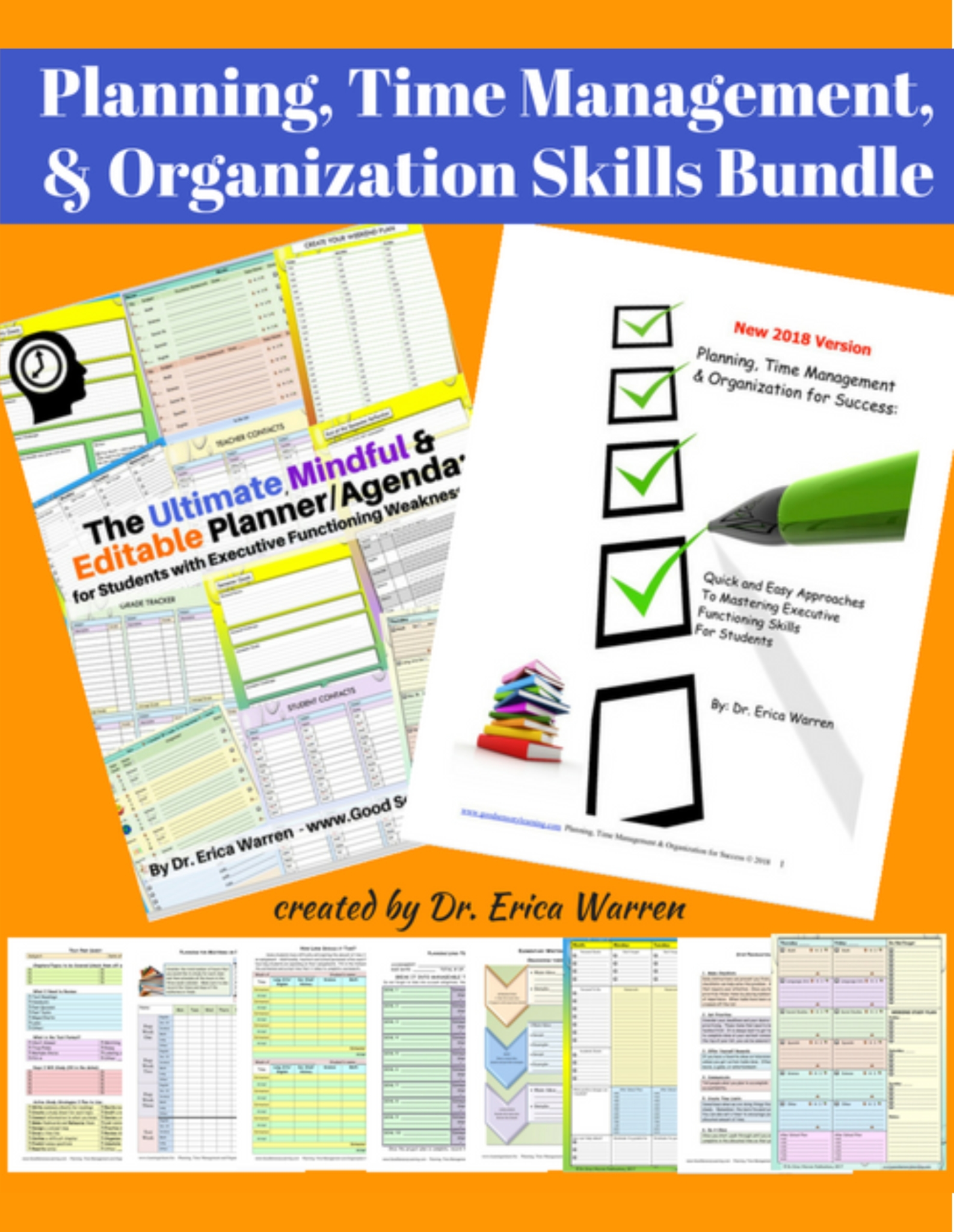
Planning, Time Management, and Organization Skills Bundle
Accommodations for Students with Physical Disabilities in Reading and Language Arts
Reading and language arts are central to most educational curricula, and ensuring accessibility in this domain is paramount.
- Adaptive Book Holders: As mentioned, these assist in keeping books open and steady.
- Audio Books: These can supplement or replace traditional reading.
- Speech-to-Text Software: Especially beneficial for interactive reading tasks or when students need to respond.
- E-Readers with Adjustable Fonts: The ability to change font size and style can aid students with visual impairments.
- Highlighting Tools: Adaptive highlighters or digital tools that allow students to mark important text.
- Text-to-Speech Software: Helps students by reading the text aloud, supporting those with reading challenges.
- Magnifiers or Screen Magnification Tools: Assists students with visual impairments in reading text.
- Interactive Digital Platforms: Apps or programs that allow interactive reading experiences, where students can click on words for definitions or hear them pronounced.
- Tactile Books: For students with significant visual impairments, these books use raised images and Braille.
- Graphic Novels or Illustrated Texts: The combination of images and text can help students better understand and engage with content.
- Flexible Seating Options: Allowing students to find comfortable positions to read, whether it’s a bean bag, cushioned chair, or standing desk.
- Customized Reading Materials: Tailored texts that cater to a student’s reading level while keeping content age-appropriate.
- Bookshare Programs: Offering a vast collection of digital books that come with customizable features for ease of reading.
- Reading Aloud: Providing opportunities for students to listen to content can aid comprehension.
- Flashcards with Visual Aids: Using visuals alongside text to aid memory and understanding.
Through a combination of these tools and strategies, educators can create an inclusive environment that addresses the diverse needs of students with physical disabilities, ensuring equal access to the enriching world of reading and writing.
Accommodations for Students with Physical Disabilities in Writing
Writing involves both cognitive functions and motor skills, and students with physical disabilities may face challenges in either or both areas.
- Adaptive Writing Tools: Pens with thicker grips, cushioned or contoured to fit a student’s specific needs.
- Voice Recognition Software: Students can dictate their essays or answers, which the software transcribes.
- Slant Boards: These angled surfaces can help students with mobility issues write more comfortably.
- Keyboarding Programs: Some students might find typing easier than writing, especially with adaptive keyboards.
- Word Prediction Software: This assists students by suggesting words as they type, reducing the amount of typing needed.
- Graphic Organizers: Helps students structure their thoughts visually before writing.
- Touch Screens and Styluses: Allows for more direct interaction when drawing or writing.
- Writing Guides: Templates that guide hand movements for those with motor challenges.
- Alternative Paper Types: Graph paper or raised-line paper can assist in guiding writing.
- Scribe Services: A person who can write or type for the student as they dictate.
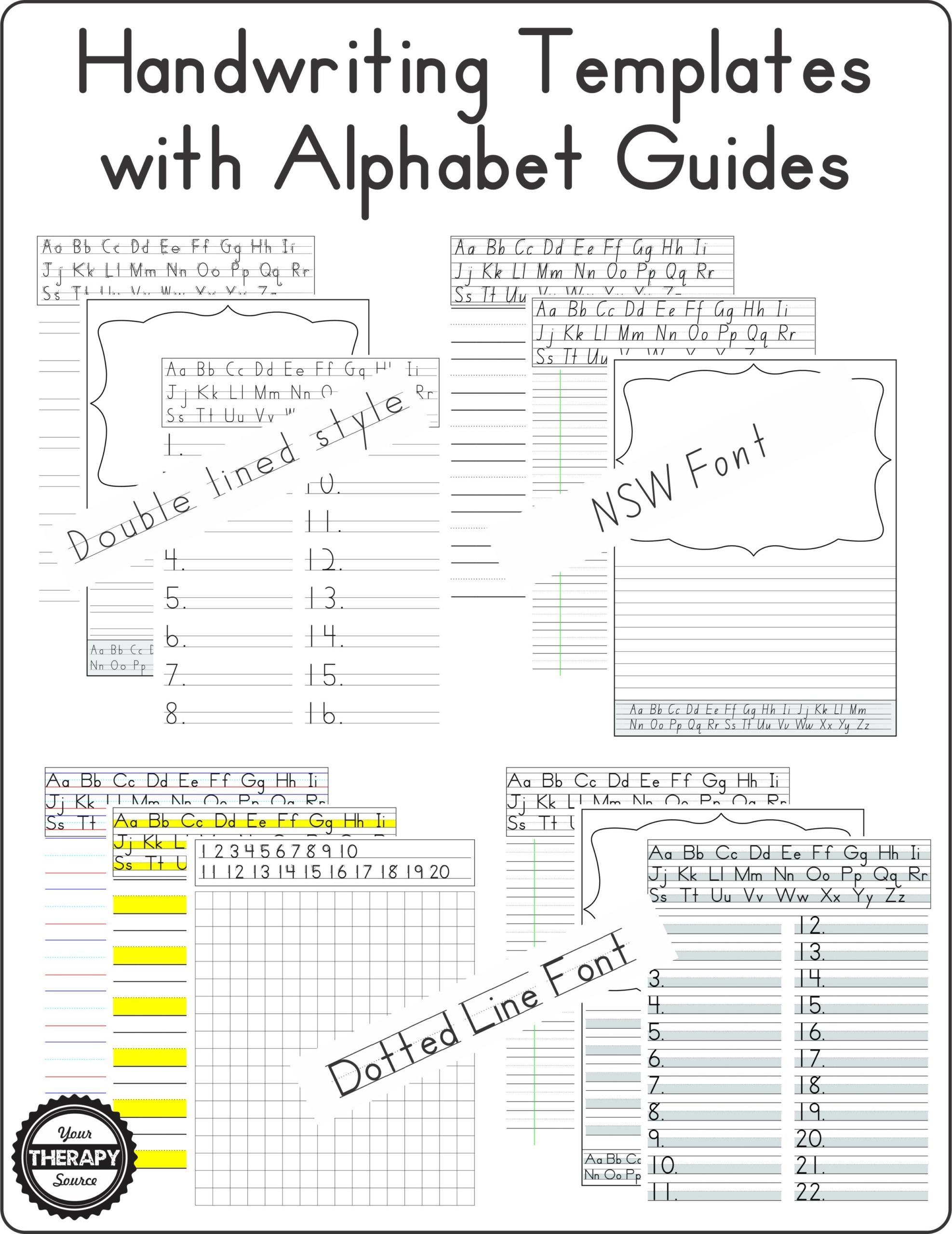
Handwriting Templates with Alphabet Guides
Accommodations for Students with Physical Disabilities in Mathematics
- Large Print Math Worksheets: For students with visual impairments, enlarging math problems can be essential.
- Math Software Programs: Interactive software can help demonstrate abstract concepts visually and allow students to manipulate data without physical restraints.
- Tactile Number Lines and Rulers: These tools provide a hands-on way for students to understand measurement and numerical order.
- Voice-activated Calculators: Students can give voice commands to perform calculations, especially beneficial for those with motor challenges.
- Adaptive Math Tool Kits: Tools such as specialized protractors, compasses, and calculators that are designed with larger grips or buttons.
- Manipulatives: Hands-on objects like counting cubes, fraction bars, and geometric shapes that can be used to represent mathematical concepts. These can be tailored for easier grip or interaction.
- Math Apps: Touchscreen apps that allow students to solve problems or understand concepts through swiping, pinching, or dragging.
- Digital Math Notepads: Platforms where students can solve math problems using a stylus or their fingers, especially beneficial for those who might have trouble using traditional paper and pencil.
- Braille Math Texts: For blind students, Braille versions of math textbooks and resources can be invaluable.
- Math Audio Books: Listening to mathematical problems and concepts can aid students who benefit more from auditory learning or those with visual impairments.
- Math Scribe: A helper who can jot down mathematical calculations or draw geometrical figures as dictated by the student.
- Interactive Whiteboards: Allows teachers and students to demonstrate math problems and solutions in a format that’s larger and more interactive.
- Visual Aids: Charts, graphs, and visual representations can break down complex mathematical concepts for better understanding.
- Flexible Assessment Methods: Offering oral examinations or extended time for students who might find the physical act of writing or computing challenging.
- Alternative Keyboard Layouts: Keyboards with mathematical symbols that are easier to access or press for students with mobility impairments.
Creating an inclusive math classroom for students with physical disabilities involves a combination of traditional teaching techniques, adaptive tools, and technology. The goal is to ensure every student, regardless of their physical constraints, has an equal opportunity to grasp and love the world of numbers.
Accommodations for Students with Physical Disabilities in Physical Education
Physical education emphasizes movement, but it should be inclusive for all.
- Adaptive PE Equipment: Using equipment tailored to specific needs can make activities accessible. For example, larger or softer balls, lighter bats or racquets, or tactile markers can make a significant difference.
- Modified Activities: Adjusting the rules or methods of play to suit the abilities of the student. For instance, a student in a wheelchair playing basketball might shoot from a designated zone closer to the basket.
- Peer Support or Buddy System: Pairing students with peers can ensure safety, boost confidence, and promote inclusion. This system fosters mutual understanding and respect among classmates.
- Alternative Assessment Methods: Instead of focusing solely on physical proficiency, assessments can encompass understanding rules, strategy planning, or even the benefits of exercises, ensuring a comprehensive evaluation.
- Personalized Activity Plan: Working closely with the student, their parents, and therapists to develop an individualized PE program that aligns with their abilities and goals.
- Assistive Devices and Supports: Using braces, walkers, wheelchairs, or prosthetics specifically designed for physical activity. These can be pivotal in helping students participate.
- Alternative Activities: If certain mainstream activities are not suitable, alternatives such as swimming, seated volleyball, or adaptive yoga can be offered.
- Extended Time: Allowing more time for students to complete tasks or circuits, ensuring they can participate without unnecessary pressure.
- Safe and Accessible Environment: Ensuring that the PE environment is free from obstacles, and if needed, has ramps or tactile paths. This not only ensures safety but also fosters independence.
- Regular Consultations with Therapists: Collaborating with physical therapists, occupational therapists, or other specialists can provide insights into the best practices, exercises, and precautions for each student.
- It’s crucial to remember that PE isn’t just about physical prowess but also about teamwork, understanding one’s body, and enjoying oneself. By adopting these accommodations, educators can ensure that students with physical disabilities not only participate but thrive in their PE sessions.
Accommodations for Students with Physical Disabilities in Art and Music
Creativity should have no boundaries, and art and music classes are where students express themselves.
- Adaptive Art Tools: Brushes with larger grips, or easels adjusted to wheelchair height.
- Modified Musical Instruments: Lightweight versions or those adapted for one-handed use.
- Digital Art and Music Software: Technology can offer ways for students to create art or compose music with customized interfaces.
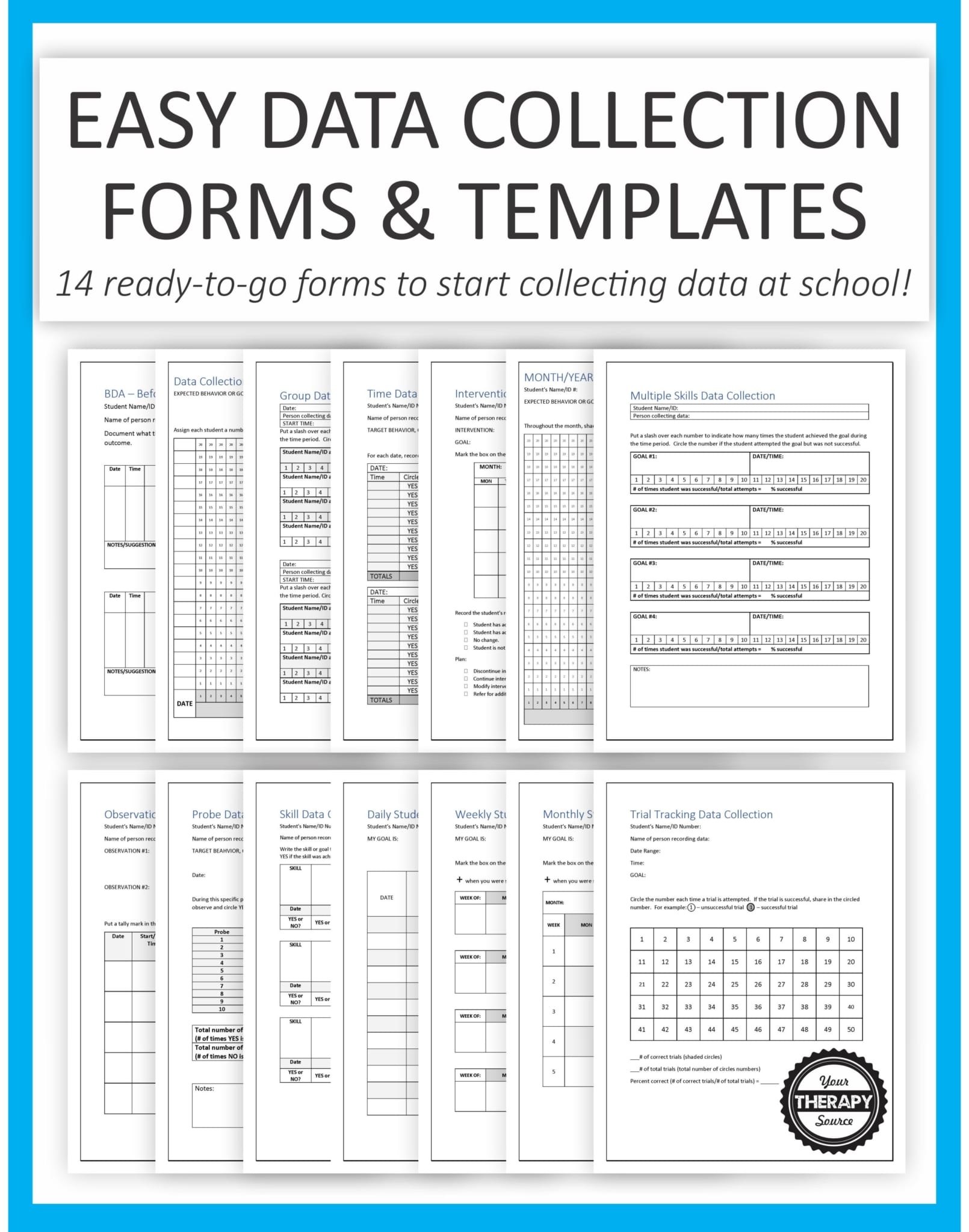
Data Collection for Special Education Templates – EASY
Accommodations during Recess
Recess is a time for relaxation and play.
- Accessible Playgrounds: Ramps, swings designed for wheelchair users, and cushioned surfaces for safety.
- Peer Support Systems: Assigning classmates to assist or play alongside students with physical disabilities.
- Structured Play Activities: Organized games that focus on inclusivity.
Accommodations in the Lunch Room
Lunchtime is also a crucial part of a student’s day.
- Accessible Seating Arrangements: Tables at an appropriate height for wheelchair users or those with mobility devices.
- Assistance with Food: Having a school staff member or trained peer assist with opening packages or cutting food.
- Quiet Zones: For students who might be overwhelmed with the noise and require a calmer space.
Field Trips and Off-Site Learning
Field trips offer unique educational experiences. However, they can pose challenges for students with physical disabilities. To ensure equal access, schools must consider the specific accommodations wheelchair users or students with mobility disabilities might need. Whether it’s ensuring physical access to off-site locations or providing alternative learning opportunities, the goal is to level the playing field.
Summary of Accommodations for Students with Physical Disabilities
When it comes to supporting students with physical disabilities, certain foundational strategies stand out. Here are five takeaways:
- Individual Needs: Accommodations for students with physical disabilities must be tailored to each student’s unique requirements, ensuring an inclusive and supportive learning environment.
- Range of Accommodations: From academic settings like reading, math, and writing to physical activities in PE, there’s a diverse range of accommodations available, including adaptive equipment, extended time, and alternative assessment methods.
- Collaborative Approach: Continuous collaboration between school staff, therapists, students, and parents is crucial in designing and implementing effective accommodations.
- Monitoring and Feedback: Regular data collection and feedback are essential to ensure that accommodations are not only effective but also promote the student’s growth and independence.
- Empowering Independence: The ultimate goal of all accommodations is to foster a sense of self-reliance and independence in students, enabling them to achieve their full potential in an inclusive educational environment.
In the pursuit of inclusive education, it’s vital for school staff, students, and parents to remember that accommodations are not a one-size-fits-all solution. Each student’s needs are unique, and the strategies employed must be tailored to fit those individual needs. Continuous monitoring, through data collection and feedback, is essential to ensure that these accommodations are benefiting the student and fostering their progress. More than just offering support, our collective goal should always be to nurture self-reliance and independence in our students. By working collaboratively, staying informed, and being adaptable, we can create an educational environment where every student is empowered to achieve their full potential.
